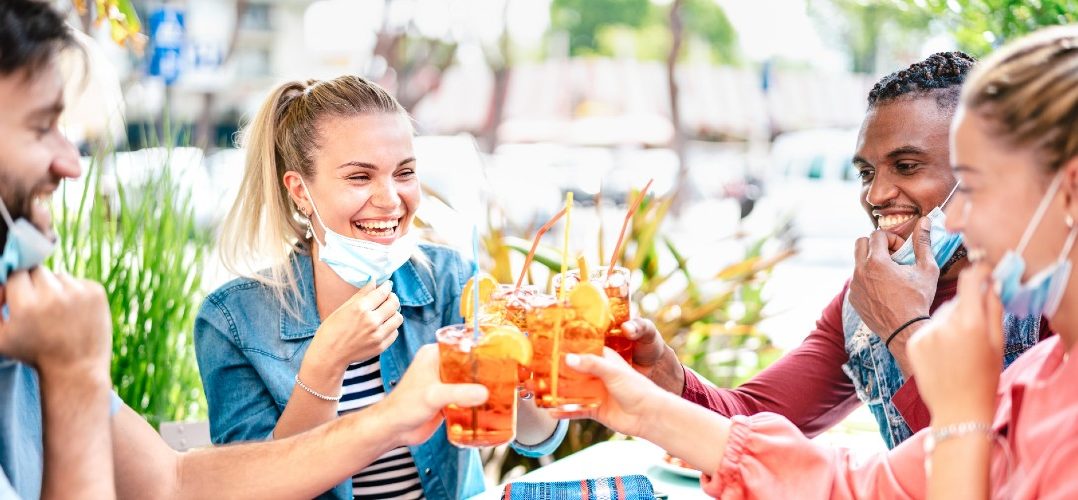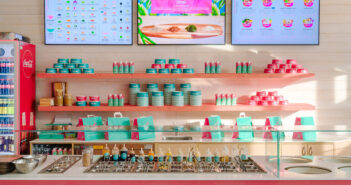The previously booming food & beverage sector has been hard hit by lockdowns throughout the world and although many are reopening, the future for the restaurant sector remains uncertain. We asked two key players to discuss how they see the food sector evolving and what the coming months will bring.

Joel Silverstein, president and CEO, East West Hospitality Group
MAPIC: What do you see as the key trends for the sector for the rest of the year in terms of adapting to the Covid era?
JS: Covid19 is like a raging fire that will devastate many parts of the global restaurant and commercial real estate industries. Clearly the sector least affected is the QSR chains with drive-thru locations, which are experiencing higher same-store sales. Fast-casual and full-service restaurants are experiencing large sales declines but it is closely correlated with Covid19 outbreaks. For example, dine-in is only down 10-15% in Shanghai but down close to 40% in Beijing where there have been recent outbreaks. Commercial real estate is in for some very tough times as Covid19 has only accelerated e-commerce trends. High financial leverage will likely lead to heavy restructuring in some cases like the USA and China. There will be more consolidation of delivery aggregators in search of reducing financial losses, but I think this business is doomed.
MAPIC: Do you have a sense of what permanent changes this period will evoke – will certain sectors of F&B suffer or gain? Will we see a different balance between restaurant types going forwards?
JS: There are too many restaurants and commercial real estate projects in many countries fuelled by cheap money and the search for yield. Full-service restaurants will undergo a dramatic shrinkage that won’t be reversed in the near-term for sure. Many malls and office projects will undergo severe financial restructuring as they cut rents and try to renegotiate their loan covenants. There will also be more consolidation of delivery aggregators and ghost (dark) kitchens as investors tire of massive losses. There will clearly be fewer independent restaurants and more chains, both of which are depressing for those who enjoy good food.

Mixed use retail and leisure: What happens next? – White Paper
MAPIC: With so much bad news around, what are the reasons to be positive, and the opportunities for new or small players?
JS: We are witnessing the culling of the herd and innovation always rises from destruction. I think we will see more merchants get together in local communities and build their own co-operative organisations to keep more of their money and drive down costs. There will always be room for new players offering tasty, affordable food in convenient forms, whether in the supermarket aisle or at their restaurants with take-away or delivery. I think shopping malls will go deep into self-delivery as well to support their restaurant and non-food tenants.

Jochen Pinsker,Jochen has a account senior vice president, The NPD Group
MAPIC: What do you see as the key trends for the sector for the rest of the year in terms of adapting to the Covid era?
JP: The most important change is that the foodservice market is much smaller. Consumers are spending significantly less money in the sector because they are not in ‘visit situations’ nearly as often to require restaurants, cafeterias, bars, takeaways and other sector channels that feed us with prepared meals, snacks and beverages. One of the most important visit situations is connected to work – on the way to work, during a lunch break or for a snack, many of us use different parts of the market. However, the more people work from home, the less we need.
There are also restrictions for several other parts of the market. Bars and clubs may still be closed, festivals or events not happening, others like cinemas or leisure parks have to cope with capacity limits. So in these areas, there may be demand but authorities are limiting opportunities. The same logic applies to reduced private and business travel. And even if some restaurants may be open, many consumers do not feel comfortable enough to sit in restaurants.
Since people are spending more time at home, all those services that support that, mostly delivery but also drive-thru counters and some takeaway options, are benefitting. Another buzzword that had been growing before the crisis is contactless. Ordering through click and collect options, contactless pickup and payment has been growing its importance since people feel safer that way.
MAPIC: Do you have a sense of what permanent changes this period will evoke – will certain sectors of F&B suffer or gain? Will we see a different balance between restaurant types going forwards?
JP: Many of the trends we have seen before the crisis but were boosted during Covid19 are here to stay: delivery, click & collect, drive-thru and digital ordering. The ‘homing’ trend, which we reported many years before Covid19, has also seen a boost since many of us will remain working from home and some consumers feel less comfortable with meeting other people outside their private space. So more of our social lives will move from the public into the private space. This is further supporting delivery and takeaway and since quick service is better placed to leverage that growth, this will be the winner from the crisis. We also expect ‘retail-gastro’ – those players originally retailers but also feeding consumers away from home, such as bakeries, grocery, petrol stations – are also expected to increase market share since they are often one-stop-shop options. On the other hand, sectors such as full-service restaurants and workplace cafeterias may be behind the curve. Once the summer is over and customers cannot sit outside anymore, capacity may be reduced and safety measures may not allow for the experience consumers are usually looking for when dining with friends. As we expect companies on average to reduce their workforce, decreasing disposable income may also impact some fast casual players as it is relatively easy for consumers to ‘downgrade’ to QSR. Travel hubs, especially airports, may also have a difficult time simply due to reduced travel and footfall.
MAPIC: With so much bad news around, what are the reasons to be positive and the opportunities for new or small players?
JP: Two issues we heard often from restaurant operators pre-Covid are likely not problems anymore: the industry – especially in the Northern countries – couldn’t find enough people to work in their restaurants. With an expected increase in unemployment, it may become easier to fully staff teams. At the same time, it might be easier post-Covid to not only find retail space but also to find that space at a reasonable rent. Delivery is also a prospering opportunity and that business has relatively low barriers of entry. If you partner with an aggregator offering the logistical function you can easily create a delivery-only brand and operate from a ‘ghost kitchen’ Finally, since consumers increasingly want to be cashless this may even allow operators to operate fully cashless.
Top Image: Getty Images – ViewApart



![[NEW] MAPIC interview: In conversation with Tobias Karlsson, Global Real Estate Director, KIKO Milano](https://www.beyondretailindustry.com/wp-content/uploads/2024/05/MicrosoftTeams-image-44-5-351x185.jpg)
![[NEW] MAPIC interview: In conversation with Giovanni Porcu, CEO and founder of Doppio Malto](https://www.beyondretailindustry.com/wp-content/uploads/2024/03/DM-Magenta_1-351x185.jpeg)